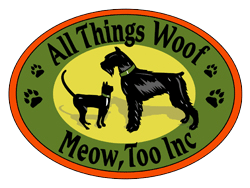{article.name}
Why Do Dogs Roll Around in Smelly Stuff?

- Share this:
- Share on Facebook
- Pin on Pinterest
- Tweet on Twitter
Dog owners are often unpleasantly surprised when their canine companion returns from a romp covered with unpleasant smells and questionable muck. Why do dogs roll around in smelly stuff, and how can you curb that noxious behavior?
What Dogs Might Roll In
Dogs are attracted to strong, potent odors that have many more layers of interest and aromatic subtleties than humans can detect. Their sensitive noses can hone in on a wide range of smells, and dogs may roll in a wide variety of odiferous substances, including…
- Feces and manure, either dried or fresh
- Carrion, roadkill, and carcasses, including dead fish
- Garbage and compost
- Mud and mudpuddles, particularly with strong smells
While many of these smelly piles may repel humans, dogs are attracted to them and will roll with joyous abandon, spreading the odor all over their fur and skin.
Why Dogs Roll in Smelly Stuff
The exact reasons why dogs roll in rotting or smelly stuff is not entirely clear, but this is a natural, instinctive behavior and there are several reasons why this type of rolling appeals to dogs.
- Hunting Instinct – Covering their own natural odors with other potent smells can be part of canines’ latent hunting instinct, to conceal themselves from their prey. Wolves, coyotes, foxes, hyenas, and other wild canines exhibit this behavior.
- Removing Artificial Smells – The scents and perfumes of upholstery, bedding, pet shampoos, and other products may smell good to humans, but they may be offensive to dogs’ sensitive noses. Rolling in smelly stuff may cover those unwanted odors.
- Communication – Rolling in different smells can help dogs collect an olfactory record of where they have been and what interesting things they have encountered. This can then be communicated to their pack when they return home.
- Catching Attention – Strong, interesting odors can catch the attention of a potential mate or give a dog a way to stand out from lesser members of its pack. This can impact the dog’s position in the pack hierarchy and affect its social standing.
- Identification – When one dog rolls in something noxious, other dogs in its pack may roll in the same material. This can create a pack identity and contribute to a shared experience, which is part of the animals’ communal behavior.
- Enjoyment – There’s no denying the fun and joy dogs experience while they’re rolling in smelly stuff, twisting and turning to spread material all over. It’s likely that some of their rolling behavior is pure enjoyment of the experience.
Stopping Smelly Rolls
Regardless of why a dog may roll in smelly stuff, the result is the same – a dirty, smelly dog. Those odors can then be transferred to other surfaces the dog encounters, including its bedding, rugs, furniture, and more, and the smells can be tough to eliminate. Many dog owners prefer to stop their pet from rolling in smelly stuff altogether.
First, remove material that may attract your dog and instigate rolling behavior. This means cleaning up feces and avoiding using manure or compost in the garden or landscape. Another option is to be sure your dog can’t reach the smelly stuff by using strong fencing and other barriers to keep your pet from finding a smelly place to roll. When out for walks, keep your dog firmly leashed and stay alert to possible debris such as carcasses or trash that could urge your dog to roll.
Simple training techniques can also keep your dog from rolling in smelly stuff. Use a squirt gun to deter your dog from unwanted rolling, or reinforce a “stop” or “to me” command with tasty treats or other rewards to stop your dog from rolling. This training will need to be consistently reinforced to ensure your dog knows what behavior is acceptable.
Finally, minimizing the artificial odors and perfumes on the dog can help curb any rolling behavior. Use unscented detergents and shampoos for your pet, and avoid keeping potpourri, incense, or other perfumed products near your dog’s bed and toys.
Removing Odors
Even with the best training, all dogs may one day roll in something their owners find unpleasant. It is important not to punish the dog when this may happen, as the animal won’t understand how its instinctive behavior was inappropriate. Instead, simply try to clean up the dog as quickly as possible, removing as much offending material, mud, and debris as possible. A mixture of hydrogen peroxide and baking soda, blended to a paste and then mixed with a small amount of grease-cutting soap, can be effective at deodorizing and cleaning a dog’s smelly coat. Commercial deodorizing shampoos and pet-friendly deodorizing sprays are also options to remove odors and keep your dog smelling sweet, no matter what they may find to roll in.

Comments